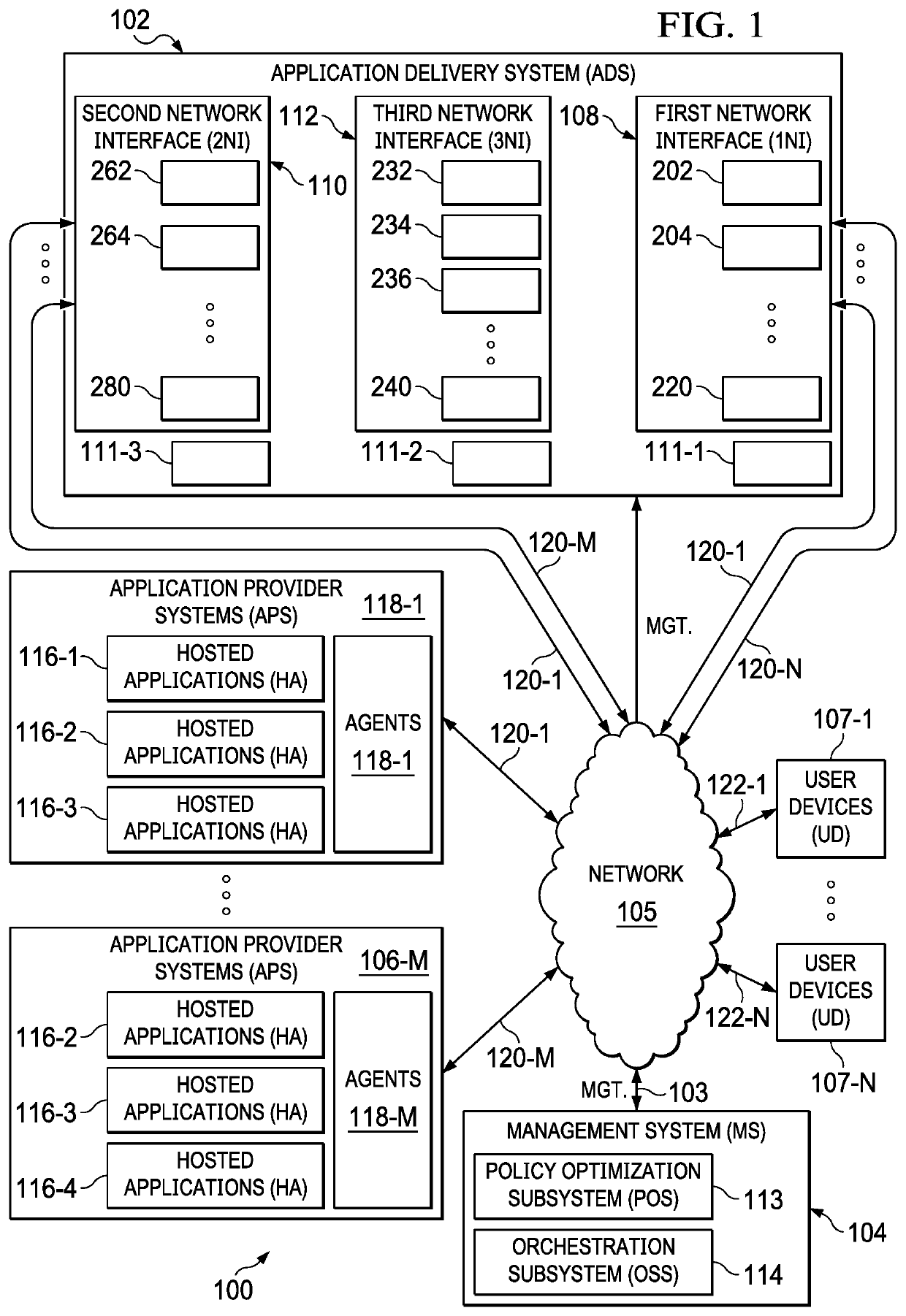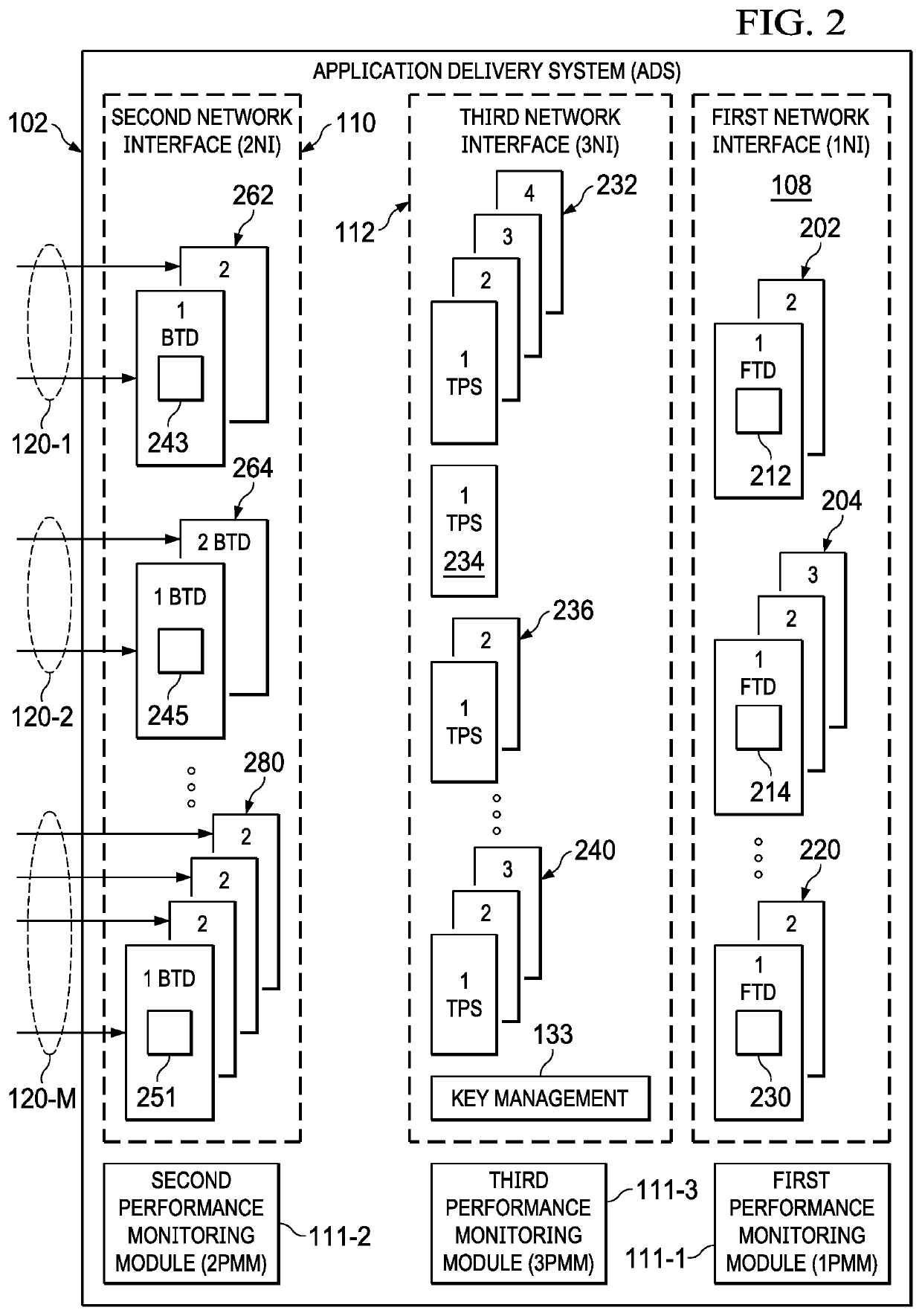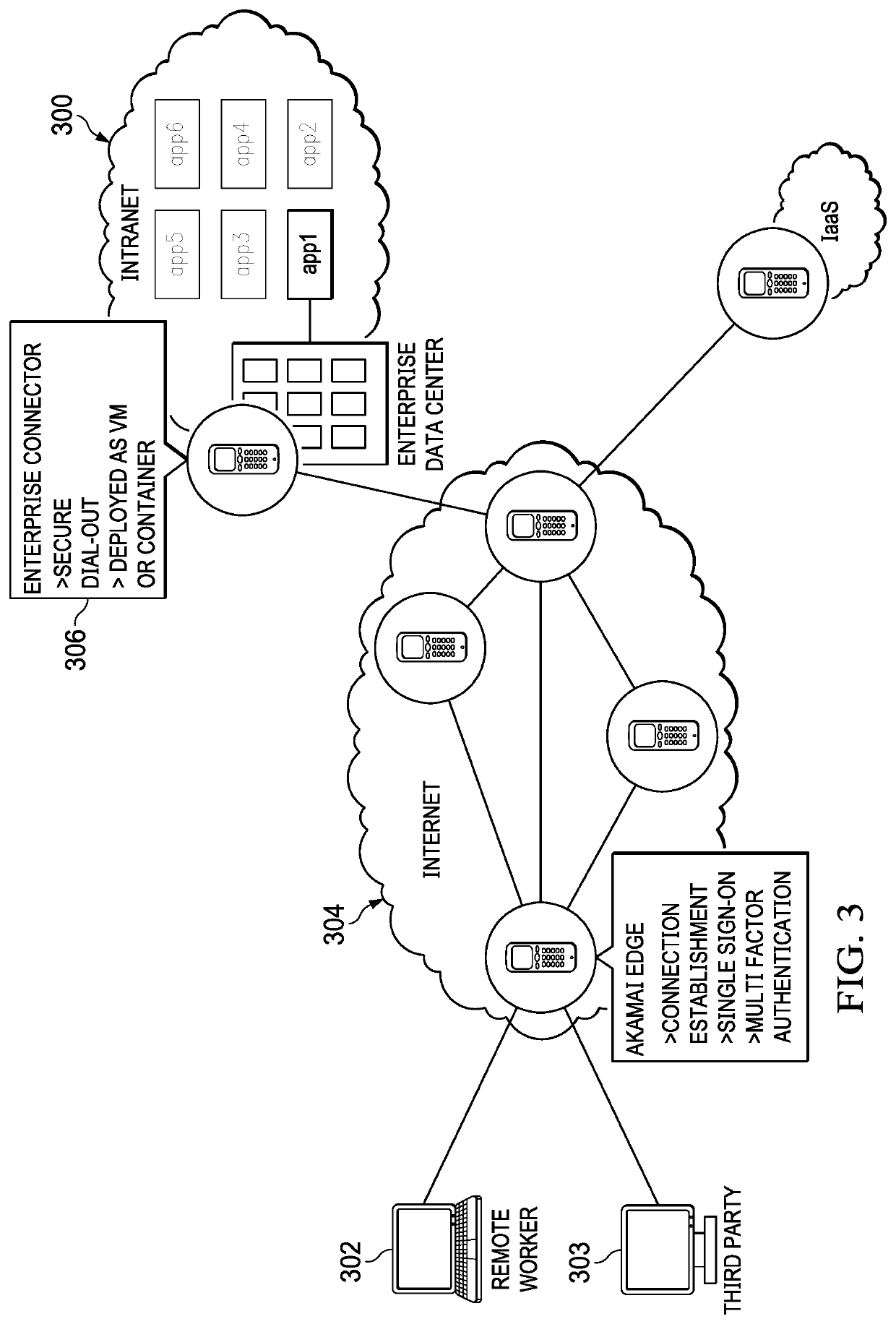Providing single sign-on (SSO) in disjoint networks with non-overlapping authentication protocols
a technology of disjoint networks and authentication protocols, applied in the direction of securing communication, digital transmission, wireless communication, etc., can solve the problems of enterprise choosing to deliver a less-than-ideal user experience, high operational and capital expenditure, and multi-layer security infrastructur
- Summary
- Abstract
- Description
- Claims
- Application Information
AI Technical Summary
Benefits of technology
Problems solved by technology
Method used
Image
Examples
Embodiment Construction
[0021]By way of background, the following describes a dynamically scalable secure application delivery system and associated method in which the techniques of this disclosure may be practiced.
Terminology
[0022]Throughout this disclosure, there is reference to “connection,”“communication path” and “network communication path.” As used herein, these terms are used interchangeably to refer to logical two-way communication paths that permit communication of information between two endpoints. A communication path may include multiple connections. The terms “connection,”“communication path” and “network communication path” may refer to one or more individual HTTPS connections that create such a logical path. An individual connection includes two endpoints, one on each end of the connection, which include data structures used to manage the flow of information through the connection and include associated buffers used in the sending and receiving of information over the connection.
System Ove...
PUM
 Login to View More
Login to View More Abstract
Description
Claims
Application Information
 Login to View More
Login to View More - R&D
- Intellectual Property
- Life Sciences
- Materials
- Tech Scout
- Unparalleled Data Quality
- Higher Quality Content
- 60% Fewer Hallucinations
Browse by: Latest US Patents, China's latest patents, Technical Efficacy Thesaurus, Application Domain, Technology Topic, Popular Technical Reports.
© 2025 PatSnap. All rights reserved.Legal|Privacy policy|Modern Slavery Act Transparency Statement|Sitemap|About US| Contact US: help@patsnap.com



